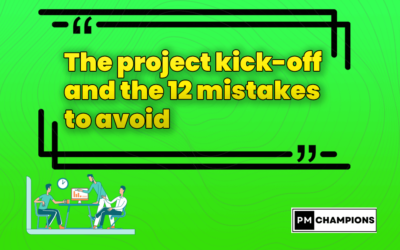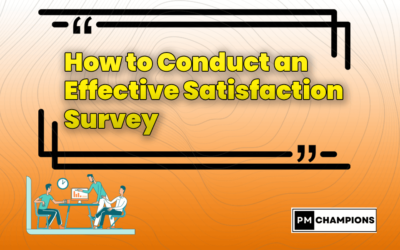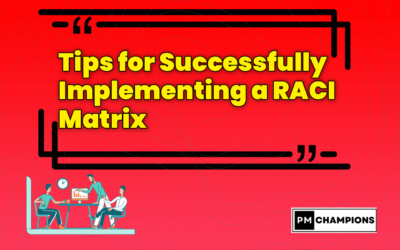
Agility:
The Goal of Risk Management
 With a formal Risk Management approach, the goal is to record all the opportunities and risks that may affect the community. It’s very likely that someone or some group of individuals has experienced a similar situation, and their Lessons Learned could make all the difference.
With a formal Risk Management approach, the goal is to record all the opportunities and risks that may affect the community. It’s very likely that someone or some group of individuals has experienced a similar situation, and their Lessons Learned could make all the difference.
The goal of our Risk Management approach is to not repeat our mistakes and take full advantage of our opportunities.
With mature Risk Management, we are stronger together.
Risk Management Terminology (And A Very Important Question)
 Risk
Risk
When we think about a risk, we think about something that could happen in the future. This includes opportunities, so we will use risk and opportunity interchangeably.
Issue
When we think about an issue, we think about something that has already happened. Something that we didn’t see coming. (This could also be something good too!)
And A Philosophical Question
But had we been practicing risk management, we may start to ask ourselves a philosophical question: Could all our issues really just be risks we never identified? This is the beauty of Risk Management. It gives us a certain level of foresight.
Some Theory about Risk Management
 Thankfully, there’s a good chance you you already know how to think about risk. Don’t want to be late? You leave a little earlier. See gelato on sale? You may just buy a few extra scoops.
Thankfully, there’s a good chance you you already know how to think about risk. Don’t want to be late? You leave a little earlier. See gelato on sale? You may just buy a few extra scoops.
The trick is that in many situations you are doing Risk Management without even knowing it. The goal is to now de-construct and understand what you have been doing all along.
Every risk (and opportunity) is structured in the same fundamental way. There are three components:
- Cause
- Risk
- Effect
Let’s explore what each of these are.
Cause
This is typically some kind of situation that can be stated in a very direct way. For example, “the sky continues to be blue”.
Risk (The Event)
This is what we want to address. In our simple example, the risk will be “it won’t rain and our crops won’t get water”
Effect
Our crops will die.
Therefore our full risk statement is: If the sky is blue, then it won’t rain and our crops won’t get water. This means our crops will die.
See how the “if-then” structure of the Cause and Risk seemed like it logically led to the effect ? That’s because we used a trick.
We actually started with the effect in mind and worked our way backwards. This is how we naturally think about the future, and it’s also a very powerful tool.
But somehow when we start to ask “What are all the things that could go wrong?”, we start getting lost. The reason is that there are theoretically an infinite amount of risks, but only a finite amount of effects.
Traveling from Paris to Vienna can be achieved on foot, on train, or a plane. Either way, the destination is always the same.
When we think in effects, we gain clarity about the actual risks we care about. It’s how we think naturally, and it’s how we want to write our risk statements.
After we’ve identified our risks, we have a few options. We can:
- Accept – It is what it is
- Avoid – Eliminate the odds
- Mitigate – Decrease the impact
- Transfer – Acquire insurance
And similarly for opportunities, we can:
- Accept – It is what it is
- Exploit – Increase the odds
- Enhance – Increase the impact
- Share – Self explanatory!
We’ll discuss these options next.
Some Real Examples about Risk Management
 Let’s consider an opportunity rather than a risk. If we can understand how to leverage this framework for the positives, the negatives become much simpler.
Let’s consider an opportunity rather than a risk. If we can understand how to leverage this framework for the positives, the negatives become much simpler.
The Situation
You are walking down the street in the evening when someone offers you a gift card worth 100 Euros. The only catch is you have to use it at a specific restaurant. You’re surprised and ask why they’re giving the cash away. You’re told that the individual is leaving the Eurozone in the morning and they have no use for the gift card. They say you looked like a nice person and wanted you to have it. How kind.
Let’s formally structure the opportunity:
Cause
Because the stranger is leaving the Eurozone in the morning, they have a gift card worth 100 Euros to give away.
Opportunity
A gift card worth 100 Euros to use at a specific restaurant
Effect
A meal and probably a great evening for free!
So, what are your options?
- Accept – You could accept the opportunity (don’t forget to say thanks!)
- Enhance (the opposite of mitigate) – You could try and ask them if they have any extra Euros on them too. They won’t be able to use those either, right?
- Exploit – Call the restaurant on the spot, ask them to confirm the balance on the card, then reserve a table in an hour.
- Share – Call your loved one and offer a nice surprise (free) meal!
In this case, sharing the meal would be a nice thing to do. Calling the restaurant on the spot is more than a little rude, and so too is asking the stranger for more money. Accepting the opportunity could be a good and neutral choice.
Tip: You may be wondering, “How could we ever arrive at this opportunity from the effect?” Good question.
If you had started with “a free meal and a great evening”, one of the potential options could be placing yourself in situations where the likelihood of an event like this increases dramatically.
That would be in very public places, preferably near restaurants or transit lines. While this is an extreme example, you can start to see how more realistic effects like “Business stakeholder satisfaction” could lead you to a more limited number of opportunities and risks that can be formally structured. Starting with the effect focuses your thinking.
General Format
Entries should be:
- Structured for an executive audience (in other words, seeing the forest instead of the trees)
- Actionable / understandable by a non-technical audience
- Accountable by the action owner







0 Comments